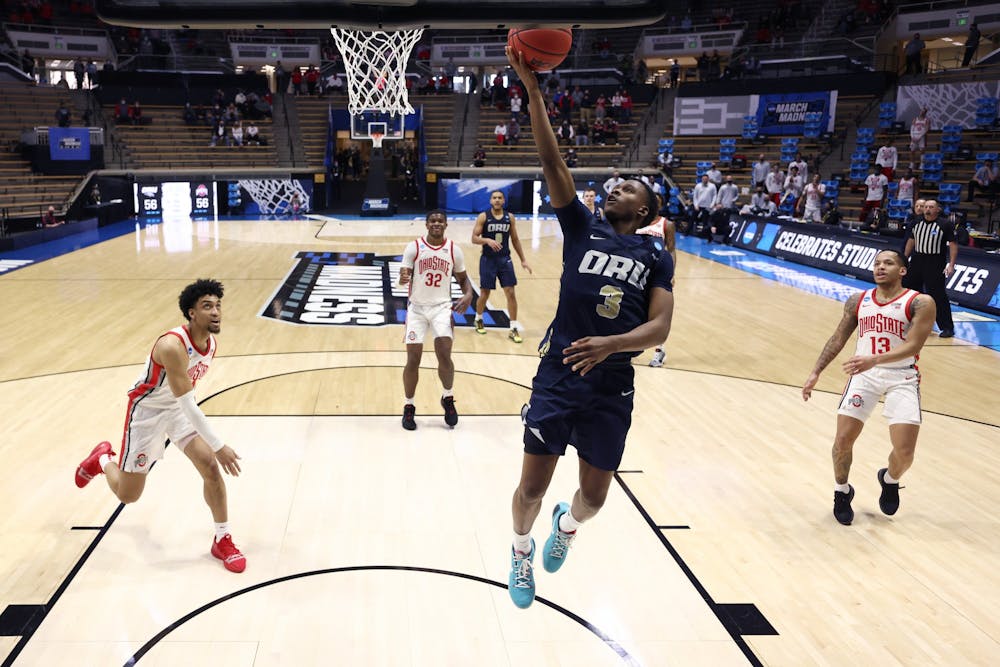If you're reading this, your bracket is busted.
March can be wild. After all, it is called March Madness. However, there is a method to the madness. Your competition in your bracket pools may be winning by choosing their favorite team color, but analytics will eventually prevail. There are seven factors that I look for in a team to win on the biggest stage in college basketball.
In March, the best teams have elite defenses, win the turnover battle and shoot well from the field. Teams who play the most demanding schedules have an advantage by competing against the top competition throughout the regular season. Along with this, margin of victory, free throws and rebounding are additional factors to consider.
Sixty-three percent of men’s tournament champions have been No. 1 seeds and only four have been a seed higher than No. 3 in 35 tournaments. Of the remaining schools, only six of the 16 are top three seeds. Upsets were anything but scarce in Round One. Every seed from one to 15 won a game in the Round of 64 for only the third time in history.
At the center of the madness was the Big Ten. Following a dominant regular season and putting nine teams into the tournament, the conference struggled despite owning favorable seeds. After a 7-8 record through two rounds, only No. 1 seed Michigan remains.
My model had the Loyola University Chicago Ramblers only one spot below Illinois, primed to upset the No. 1 seed Big Ten champions. The model predicted Purdue to be upset outright against the Mean Green of North Texas University, who beat the only Indiana team right out of the gates.
In a year where the state of Indiana showed off its historic arenas and has so far masterfully hosted the entire March Madness tournament, not a single team from the state won a game.
The surprise conference has no doubt been the Pac-12. Through the Round of 32, the five Pac-12 squads have gone a combined 10-1 and hold 25% of the Sweet 16 field.
It’s no surprise that zero perfect brackets remain in ESPN’s bracket challenge. However, the Sweet 16 can be predicted accurately using history and numbers.
Underdog teams, which 10 of the 16 teams fall into, historically fall off at this point in the tournament. For example, 33% of No. 5 seeds make the Sweet 16, but only 6% move onto the Elite 8. No. 12 seeds drop heavily from 15% to 0.7% and no seed over No. 12 has ever made it to an Elite 8.
According to the model, here are the best remaining teams, with the predicted Final 4 as the top four in this model.
Model Score
Baylor
Gonzaga
Michigan
Loyola Chicago
Houston
Alabama
Arkansas
Villanova
Florida State
USC
Creighton
Oregon
Syracuse
UCLA
Oral Roberts
Oregon State






